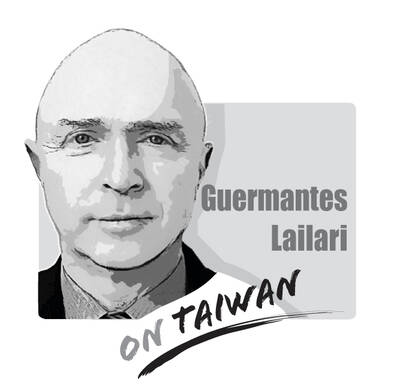During a question-and-answer session at the Legislative Yuan in Taipei last week, Democratic Progressive Party (DPP) Legislator Ho Hsin-chun (何欣純) said that more than 70 percent of the 726 uncrewed aerial vehicles (UAVs) that government agencies use are made by Chinese companies, while the US and Japan have either prohibited or decommissioned China-made UAVs.
Premier Su Tseng-chang (蘇貞昌) promised that he would appoint Vice Premier Shen Jong-chin (沈榮津) to deal with the UAV issue, adding that the Cabinet would look into the use of Chinese UAVs, and decide as soon as possible whether to ban or decommission them.
The technology has boomed in the past few years, creating drones controlled by portable computers or even smartphones that can fly nearly anywhere at any time. These advanced products exist in modern societies across the world.
Meanwhile, the Chinese Communist Party (CCP) is devoting a massive amount of resources to the research and development of drones. From a variety of civil drones for daily use to military UAVs capable of performing strike missions, Chinese-made products have become popular procurement objects in many countries.
Drones have diverse applications in economic development as well as in people’s daily lives. For example, apart from serving as recreational and entertainment tools, such devices can also be used for various educational, commercial and agricultural purposes — such as instruction, disaster relief, filmmaking, topographic and geomorphic research, and underground mine exploration.
However, if the software used in these drones is intentionally designed to be controlled by the CCP, they could be transformed into offensive weapons that could be used to attack other countries or as strategic weapons that could be used to steal confidential information from governments.
It is therefore surprising that more than 70 percent of the government’s drones are made by Chinese companies, and this figure is just the official number released by the Cabinet. The unreported number is likely much larger, and the figure is likely to rise as more Chinese UAVs are reported by government agencies.
Taiwan should not deal with this issue carelessly. Besides, according to media reports, the results of a study by the Telecom Technology Center show that some of the government-owned Chinese UAVs might pose an information security risk.
The issue has become a potential national security threat. The Cabinet should demand that all government agencies stop purchasing and using Chinese drones. President Tsai Ing-wen’s (蔡英文) administration should promptly start treating the issue as a priority national security matter.
Yao Chung-yuan is a university professor and former deputy director of the Ministry of National Defense’s strategic planning department.
Translated Eddy Chang

Chinese state-owned companies COSCO Shipping Corporation and China Merchants have a 30 percent stake in Kaohsiung Port’s Kao Ming Container Terminal (Terminal No. 6) and COSCO leases Berths 65 and 66. It is extremely dangerous to allow Chinese companies or state-owned companies to operate critical infrastructure. Deterrence theorists are familiar with the concepts of deterrence “by punishment” and “by denial.” Deterrence by punishment threatens an aggressor with prohibitive costs (like retaliation or sanctions) that outweigh the benefits of their action, while deterrence by denial aims to make an attack so difficult that it becomes pointless. Elbridge Colby, currently serving as the Under
The Ministry of the Interior on Thursday last week said it ordered Internet service providers to block access to Chinese social media platform Xiaohongshu (小紅書, also known as RedNote in English) for a year, citing security risks and more than 1,700 alleged fraud cases on the platform since last year. The order took effect immediately, abruptly affecting more than 3 million users in Taiwan, and sparked discussions among politicians, online influencers and the public. The platform is often described as China’s version of Instagram or Pinterest, combining visual social media with e-commerce, and its users are predominantly young urban women,
Most Hong Kongers ignored the elections for its Legislative Council (LegCo) in 2021 and did so once again on Sunday. Unlike in 2021, moderate democrats who pledged their allegiance to Beijing were absent from the ballots this year. The electoral system overhaul is apparent revenge by Beijing for the democracy movement. On Sunday, the Hong Kong “patriots-only” election of the LegCo had a record-low turnout in the five geographical constituencies, with only 1.3 million people casting their ballots on the only seats that most Hong Kongers are eligible to vote for. Blank and invalid votes were up 50 percent from the previous
Japanese Prime Minister Sanae Takaichi lit a fuse the moment she declared that trouble for Taiwan means trouble for Japan. Beijing roared, Tokyo braced and like a plot twist nobody expected that early in the story, US President Donald Trump suddenly picked up the phone to talk to her. For a man who normally prefers to keep Asia guessing, the move itself was striking. What followed was even more intriguing. No one outside the room knows the exact phrasing, the tone or the diplomatic eyebrow raises exchanged, but the broad takeaway circulating among people familiar with the call was this: Trump did